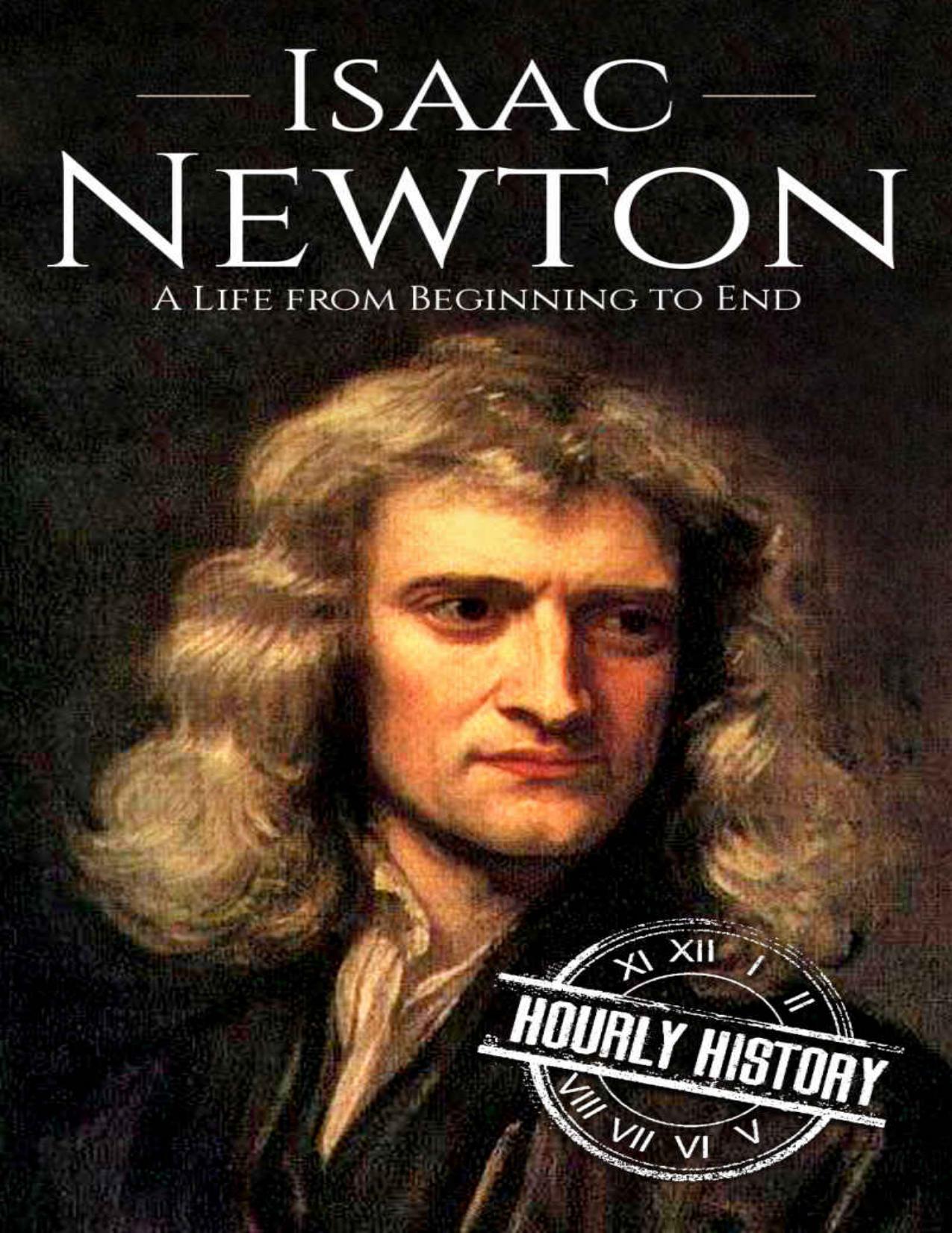Isaac Newton: A Life From Beginning to End (Biographies of Physicists Book 2) by Hourly History

Author:Hourly History [History, Hourly]
Language: eng
Format: azw3, pdf
Publisher: Hourly History
Published: 2017-06-19T16:00:00+00:00
Chapter Six
Principia
âIf I have seen further than others, it is by standing upon the shoulders of giants.â
âIsaac Newton
The years leading up to Newton's publishing of the Philosophiae Naturalis Principia Mathematica or Principia , as it has come to be known, were productive ones. By 1684 Gottfried Leibnitz, a German philosopher had published his own paper on calculus and from that moment on there was a feud going between Leibnitz and Newton.
Leibnitz wanted to discover how equations could describe the physical world. Newton then claimed he had done this exact work twenty years earlier and that Leibnitz had stolen his ideas. Newton hadn't published his work back then, and it was at this time that he went back to his old notes to prepare them for publication.
Newton had been reluctant to publish his calculus findings because he feared rejection and ridicule from his peers. Yet, challenged by Robert Hooke to prove his theories about planetary orbits, Newton produced a book which would become the foundation for physics as we know it.
During his time at Trinity College, Newton would spend some time at the center court, usually with his colleague Isaac Barrow. He would quietly observe everything going on around him. Even when watching something like a simple game of tennis, his mind was racing off with scientific calculations.
When struck by the racket, for instance, the tennis ball curved in either an upward or a downward direction. He saw that when the ball is hit diagonally, it acquires spin. The side of the ball that is struck by the racket then gains acceleration and motion. Newton had been thinking about just such a concept as this for a long time and seeing it happen before his eyes only brought more proof to his attention.
Newton had the ability to look into the world and see the underpinnings of what made it go. Everyone saw just the scene in front of them; Newton was able to ascertain the framework that held that scene up. He didn't just see a tennis ball being hit from one side of a court to another; he understood the reason it moved in the ways that it did.
Newton lived in a world of ideas, experiments, forms and concepts. It was one of these ideas which gave way to his laws of motion. The Principia itself is a work in three books. It deals principally with massive bodies in motion, and Newton did this through hypothetical laws of force and by introducing a variety of conditions. Through observation and by offering criteria on which to decide, he raised many problems of motion.
Newton's first law of motion states that âan object at rest stays at rest and an object in motion stays in motion with the same speed and in the same direction unless acted upon by an unbalanced force.â
Suppose you fill a baking dish with water and then walk it around an oval track as fast as you can. You observe that the water spills out of the dish at certain places along the track.
Download
Isaac Newton: A Life From Beginning to End (Biographies of Physicists Book 2) by Hourly History.pdf
This site does not store any files on its server. We only index and link to content provided by other sites. Please contact the content providers to delete copyright contents if any and email us, we'll remove relevant links or contents immediately.
Blood and Oil by Bradley Hope(1531)
Wandering in Strange Lands by Morgan Jerkins(1374)
Ambition and Desire: The Dangerous Life of Josephine Bonaparte by Kate Williams(1346)
Daniel Holmes: A Memoir From Malta's Prison: From a cage, on a rock, in a puddle... by Daniel Holmes(1295)
It Was All a Lie by Stuart Stevens;(1265)
Twelve Caesars by Mary Beard(1258)
The First Conspiracy by Brad Meltzer & Josh Mensch(1140)
What Really Happened: The Death of Hitler by Robert J. Hutchinson(1131)
London in the Twentieth Century by Jerry White(1114)
Time of the Magicians by Wolfram Eilenberger(1089)
The Japanese by Christopher Harding(1086)
Twilight of the Gods by Ian W. Toll(1085)
Cleopatra by Alberto Angela(1063)
A Woman by Sibilla Aleramo(1054)
Lenin: A Biography by Robert Service(1046)
The Devil You Know by Charles M. Blow(986)
Reading for Life by Philip Davis(973)
The Life of William Faulkner by Carl Rollyson(925)
1965--The Most Revolutionary Year in Music by Andrew Grant Jackson(924)
